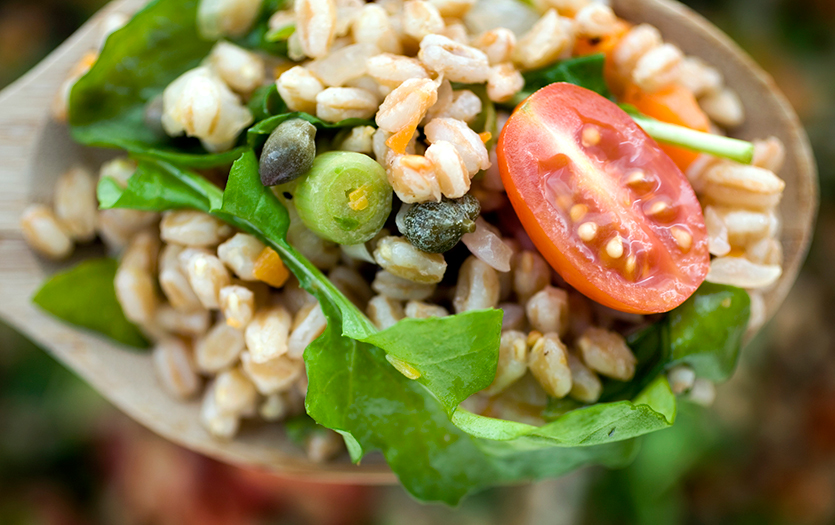
This post was written based on a presentation given by Caitlyn Bauer, MS, RDN, LD, Parkview Center for Healthy Living.
You might have seen headlines about the health benefits of eating a Mediterranean diet. But what does that mean, practically? How does that differ from how most Americans eat? Let’s explore what a Mediterranean diet looks like and how you can incorporate ancient grains, specifically farro, into your heart-healthy diet.
The standard American diet
The standard American diet heavily features processed foods, which are often low in dietary fiber as well as some vitamins and minerals due to their high processing. Our diet also tends to be high in sodium, fat and added sugar. These factors lead to the American diet contributing to the development of many health conditions including heart disease, obesity, diabetes and certain cancers.
The Mediterranean diet
Studies have shown that a healthier way to eat is to follow a Mediterranean diet. The Mediterranean diet follows the eating patterns of people across different Mediterranean countries but generally emphasizes plant-based foods and healthy fats. It is not a fad diet, which are difficult to sustain, but rather a general eating plan, which offers flexibility and promotes lifestyle changes.
The Mediterranean diet …
- Is an eating plan
- Encourages physical activity
- Encourages whole foods
- Encourages lean meats
- Encourages low-calorie beverages
- Allows room for less healthy options
- Encourages lifestyle changes
The Mediterranean diet is not:
- A fad diet
- Restrictive or a prescription to avoid certain foods or food groups
- Singularly focused
Research has found that following a Mediterranean eating plan has numerous health benefits including reducing the risk of diseases like cardiovascular disease, diabetes and obesity, increasing dietary fiber intake, and reducing added sugar, sodium and fat in your diet.
Try ancient grains
A Mediterranean eating plan typically includes eating a lot of grains. The most prevalent grain in America is wheat, but choosing from a variety of grains can help you meet the dietary recommendations for various nutrients. That’s where incorporating ancient grains can be helpful.
Ancient grains have been around for centuries and were eaten in ancient civilizations. They tend to be less processed or refined than wheat-based products and are not genetically modified. These ancient grains tend to digest slower due to increased fiber and protein content which can help regulate blood glucose levels and reduce cholesterol levels. They also tend to have more vitamins and minerals due to less refinement.
However, it is important to keep in mind that ancient grains do still have carbohydrates, so you should follow serving-size recommendations. Additionally, some ancient grains like farro, barley, bulgur and rye contain gluten.
Types of ancient grains:
- Amaranth
- Sorghum
- Barley
- Millet
- Bulgur/cracked wheat
- Quinoa
- Kamut
- Farro
- Rye
Fabulous farro
Let’s take a closer look at one of these ancient grains – farro. Farro is in the wheat family (it contains gluten) and has a chewy texture and nutty flavor. It’s often featured in Mediterranean cuisine and is high is protein and fiber which can help to curb appetite and aid in weight management. You can cook farro on the stovetop, in a slow cooker or in the oven. Add it to a recipe like risotto, soup or stew, or eat it on top of a salad.
Nutrition facts
per 100 gm serving (~2/3 cups) of farro
- Calories: 340
- Protein: 13g
- Carbohydrates: 72g
- Fiber: 10.7g
- Fat 2.5g
Vitamin and minerals in farro
- Selenium
- Manganese
- Phosphorus
- Copper
- Folate
If you are curious about nutrition or wish to make healthier choices, check the schedule of Classes and Events on parkview.com. Our dietitians often hold educational presentations for the public. If you have concerns about your diet, talk to your provider about connecting with a registered dietitian for assistance.



